A Summer Dive Into NIH History
This blog entry was contributed by Joseph Shultz.
With summer winding down, it's about time we took another dive into some NIH history! These new additions to the NIH Stetten Museum collection feature some of the most prominent investigators ever to walk the NIH campus, including a Nobel prize winner and a scientist who made important discoveries about how electricity travels between neurons.
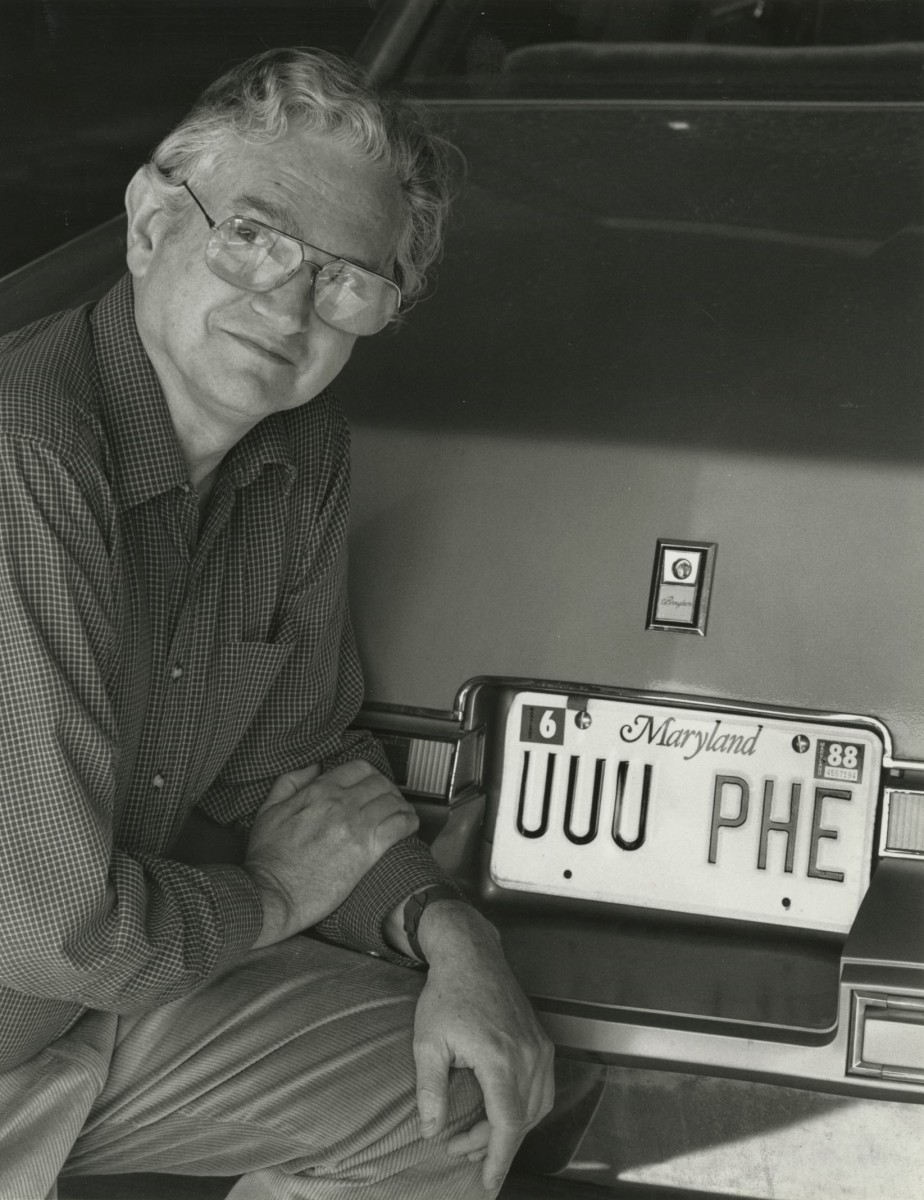
When Dr. Marshall Nirenberg approached NIH photographer Bill Branson about taking a picture in the Building 37 parking lot, he didn’t tell Branson anything else. Nirenberg had won the 1968 Nobel Prize for his role in deciphering the genetic code. His first breakthrough had been discovering that “UUU” or uracil, is the RNA code directing the making of the amino acid “PHE” or phenylalanine. It wasn’t until after the picture had been taken that Branson understood the significance of the message on the plate.
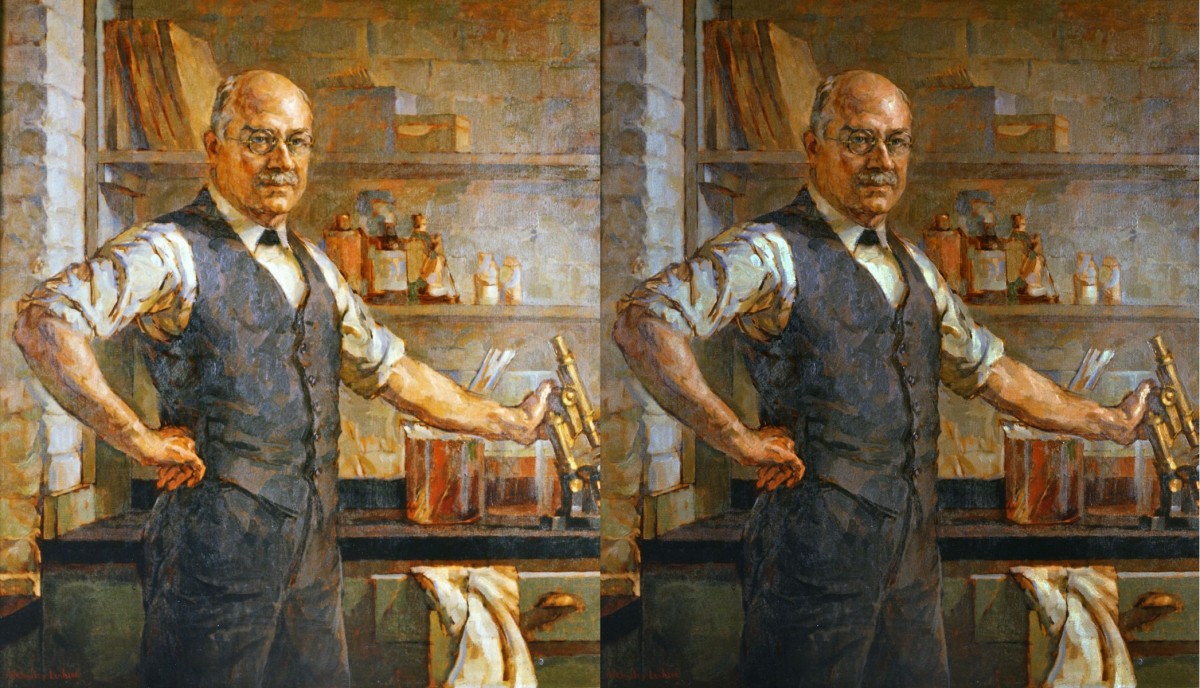
Before: The old version looked too orange. After: The new image retains the warmth of the colors without skewing them.
Looking dapper, Doctor! Dr. Joseph Kinyoun was the founder of the Hygienic Laboratory, which evolved into NIH. Images of his portrait did not do justice to the original painting. Bill and Ernie Branson — staff photographers at the NIH — were given the task of obtaining a new, print-ready copy. The reflections of the light on the glass case containing the photo presented a unique challenge. To take the photo, they strung up black cloth to dampen the incoming light and correct the glare. At one point, security came over to ask them if they were doing something shady!
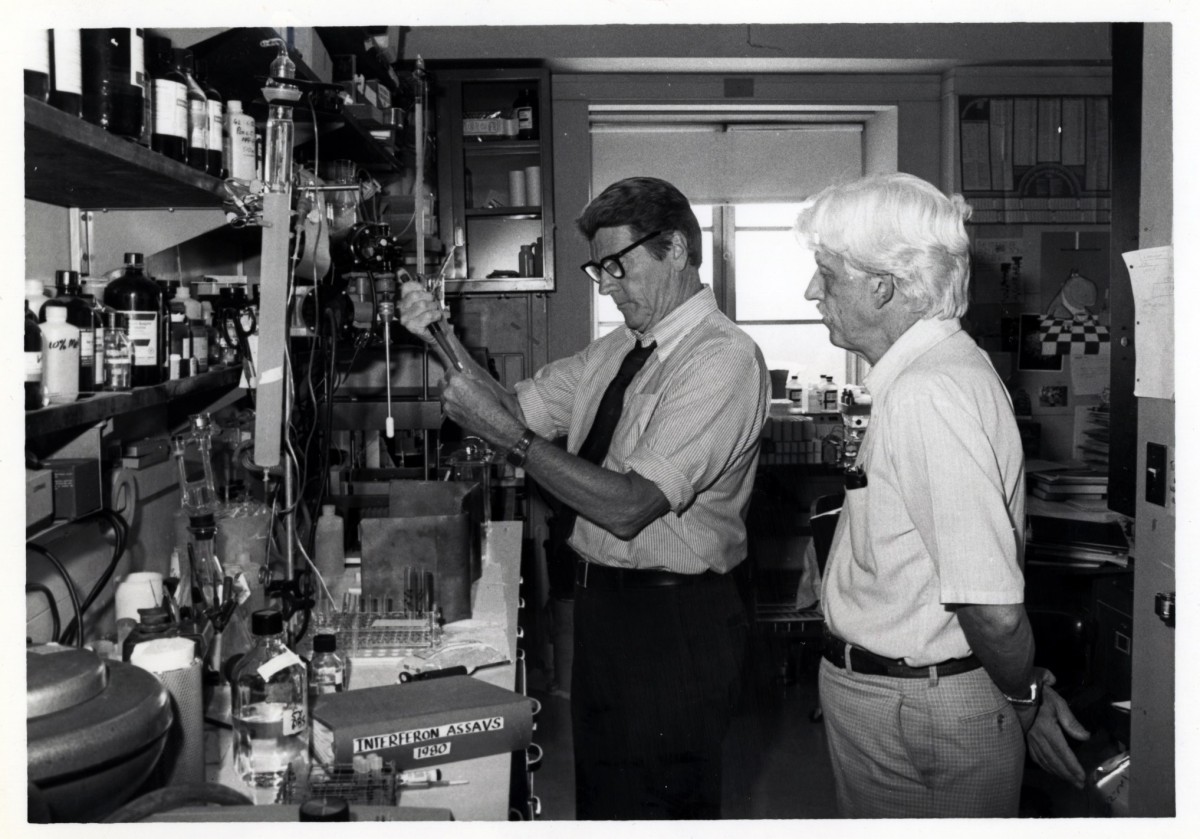
Family members often share wonderful photos with us, like this one of Drs. Christian Anfinsen (left) & Joseph “Ed” Rall (right), which came from the Rall Family. Rall recruited Anfinsen to be a lab chief at the National Institute of Arthritis and Metabolic Diseases — now the National Institute of Diabetes and Digestive and Kidney Diseases (NIDDK) — in 1962. Anfinsen would share the 1972 Nobel Prize for demonstrating how proteins fold. By the mid-1970s, Anfinsen had turned to studying interferon, as the notebook on the desk shows. We do our best to make our images available to the public; we shared this image, and many others, with the National Library of Medicine (NLM), so it could be seen by a wider audience. To learn more about Anfinsen’s work as an investigator and a human rights activist, check out both our new exhibit and the Anfinsen Papers at NLM.
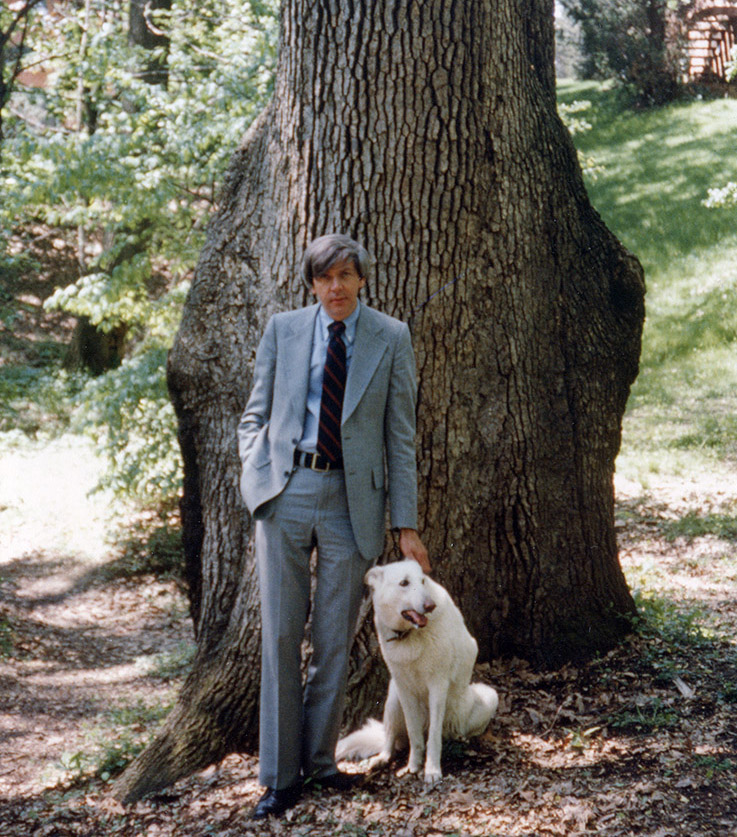
Is there anything more human than a man and his dog? This photo of Dr. Charles “Chuck” McIntosh and his White Shepherd named Misty is part of a collection of images that we are currently processing. McIntosh, a cardiac surgeon who worked at the National Heart, Lung, and Blood Institute (NHLBI) for 20 years and held multiple patents, loved the companionship of his dogs, and Misty was no exception. This photo came to us courtesy of McIntosh’s wife Deborah J. Barbour, M.D. after he died in May 2017. The involvement of investigator’s families is truly invaluable in discovering and documenting images of otherwise larger-than-life figures.
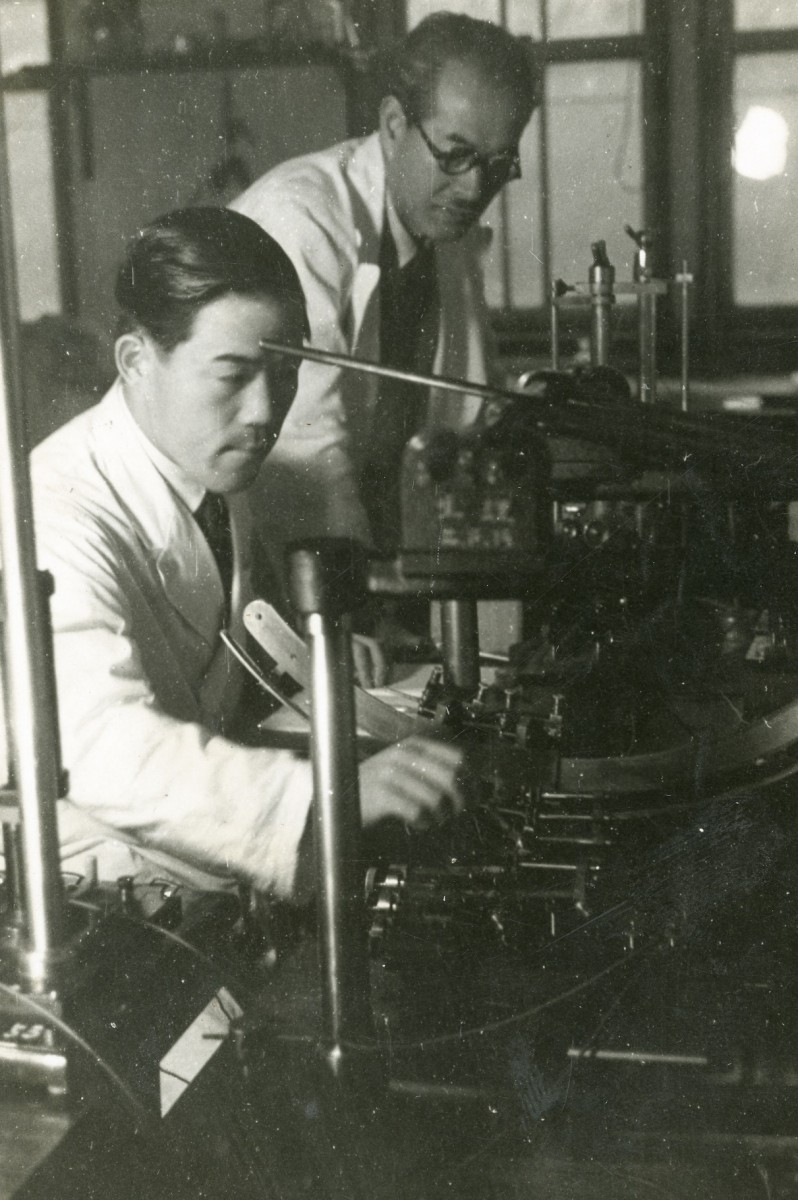
Hmmm…when and where was this photo of Dr. Ichiji Tasaki (left) taken? There’s a plethora of possibilities. The photo of Tasaki hard at work with an unknown colleague comes to us courtesy of his son, Keiji Tasaki, and daughter-in-law, Ann Rossilli. While working in his native Japan, Tasaki demonstrated that a myelin sheath insulates nerve cells and speeds the conduction of nerve impulses. Keiji and Ann believe Tasaki is in his 30s in this photo (c. 1940). We’re still trying to find out what it is he’s working on though!
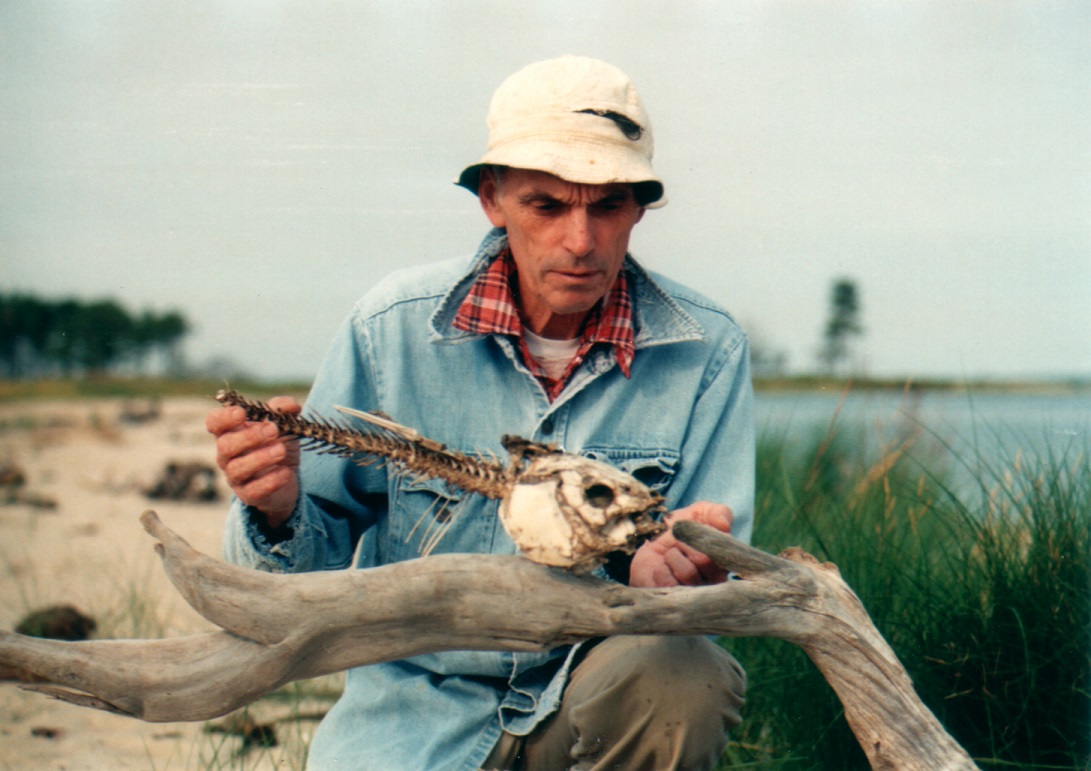
When searching for images, colleagues of scientists are an important resource, as shown in the case of Dr. Michael Potter. Potter worked at the National Cancer Institute (NCI) for nearly 50 years. His work with plasma cell tumors was instrumental in characterizing the structure and function of antibodies. Potter was a teacher who freely shared his time, ideas, and materials with colleagues and competitors. He enjoyed trips to the Chesapeake Bay to fish, comb the beaches, and muse about science with friends, colleagues, and family. This photo, of Potter examining a skeleton on one such trip to James Island in the Chesapeake Bay (1980s), came to us courtesy of Dr. Beverly Mock, Potter’s successor at NCI.
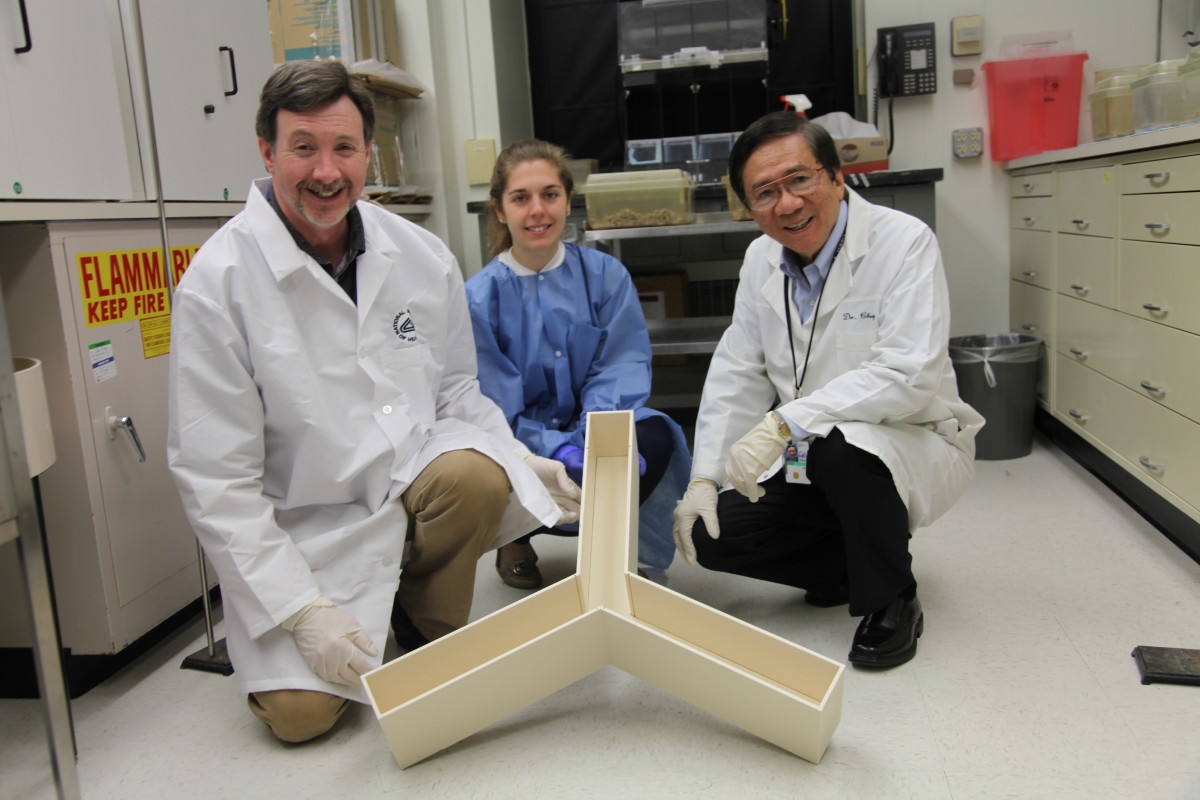
We at the NIH Stetten Museum snap our own photos when possible, like this image of Drs. Peter Leeds (left), Lisa Scheuing (center), and De-Maw Chuang (right). Chuang’s work at the National Institute of Mental Health (NIMH) demonstrated that lithium has a protective effect on the central nervous system. The Y-maze they’re holding was used to test rodent memories in their studies on treatments for stroke, traumatic brain injury, and Huntington’s Disease. It’s our mission to record and document as much as we can about researchers and the amazing work they do here on a day-to-day basis. To learn more about Dr. Chuang's career, check out the transcript of Exhibit Designer Hank Grasso’s oral history interview with him.
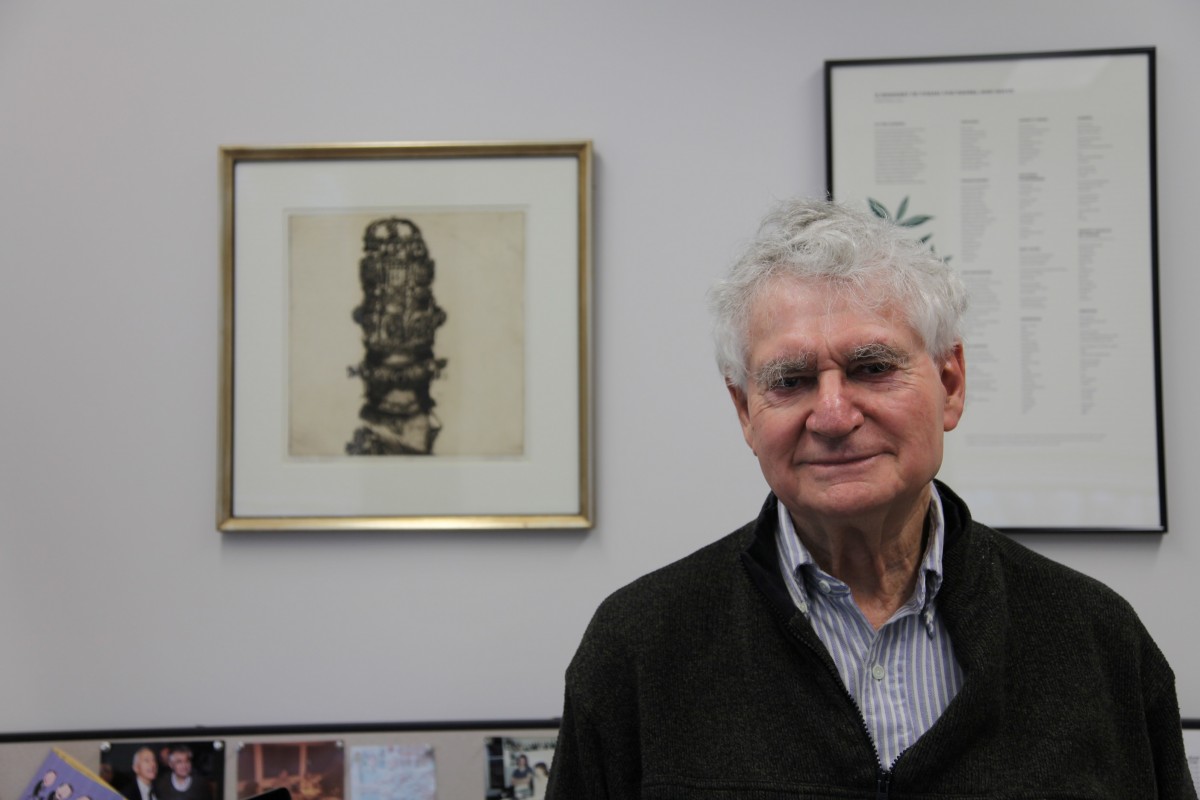
That man sure is wearing an abundance of hats. Not the painting! We’re talking about Dr. Ira Pastan. Pastan’s research since joining NIH in 1959 includes the regulation of genes, inventing technology to improve the processing speed of immunofluorescence-based microscopy, the use of immunotoxins in cancer treatment, and much more. Pastan actually requested that the NIH Stetten Museum take his picture alongside that painting. We could not have asked for a better metaphor for his career. To learn more about Dr. Pastan's work, check out the Object Record for Pastan’s invention in our collection.
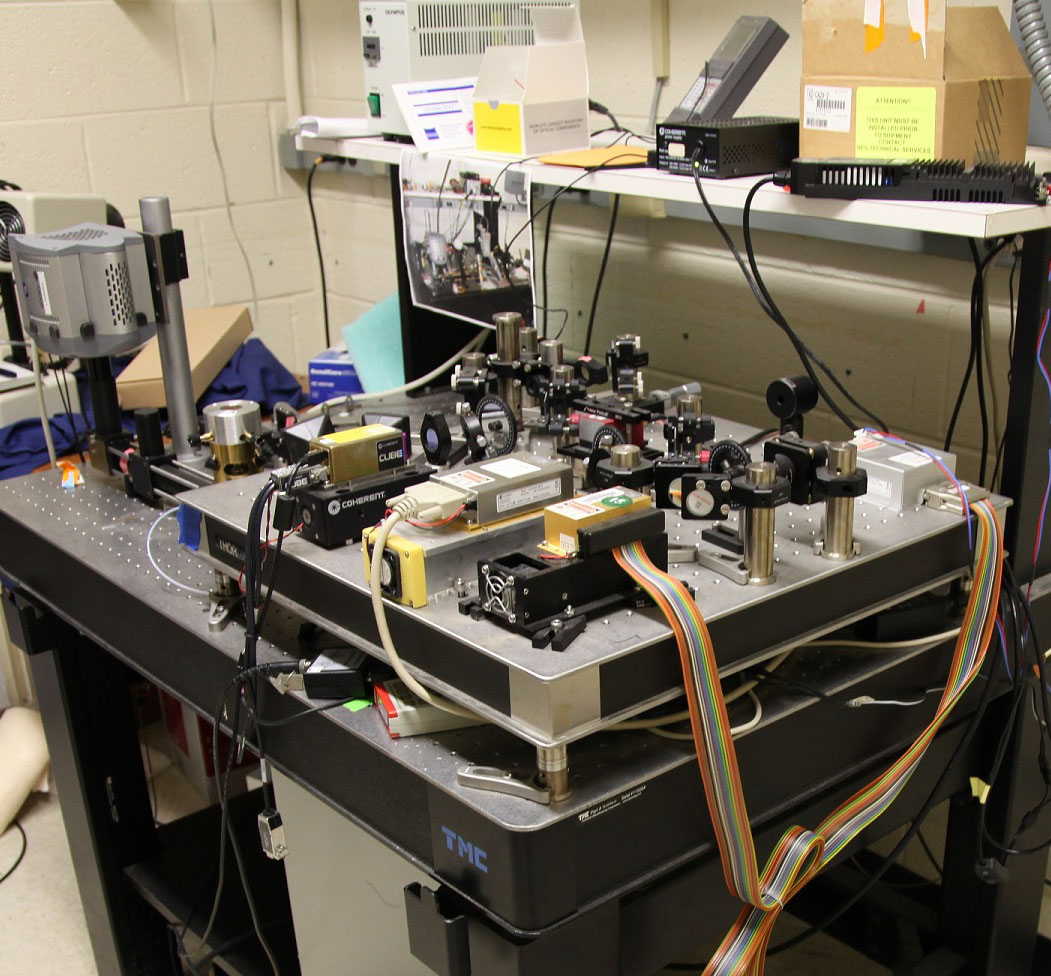
Objects can be powerful storytelling tools. That is why the Stetten Museum pays close attention to documenting objects of importance on the NIH campus. This prototype of the Photoactivation Localization Microscopy (PALM) system, which allows single molecules to be imaged inside biological systems, was the result of a collaboration between Drs. Jennifer Lippincott-Schwartz and George Patterson of the Eunice Kennedy Shriver National Institute of Child Health and Human Development (NICHD) — who developed the photoactivatable green fluorescent protein (GFP) used in PALM — and Drs. Eric Betzig and Harald Hess, who developed PALM. Betzig won the 2014 Nobel Prize for his seminal role.
Related Blog Posts
This page was last updated on Wednesday, July 5, 2023
